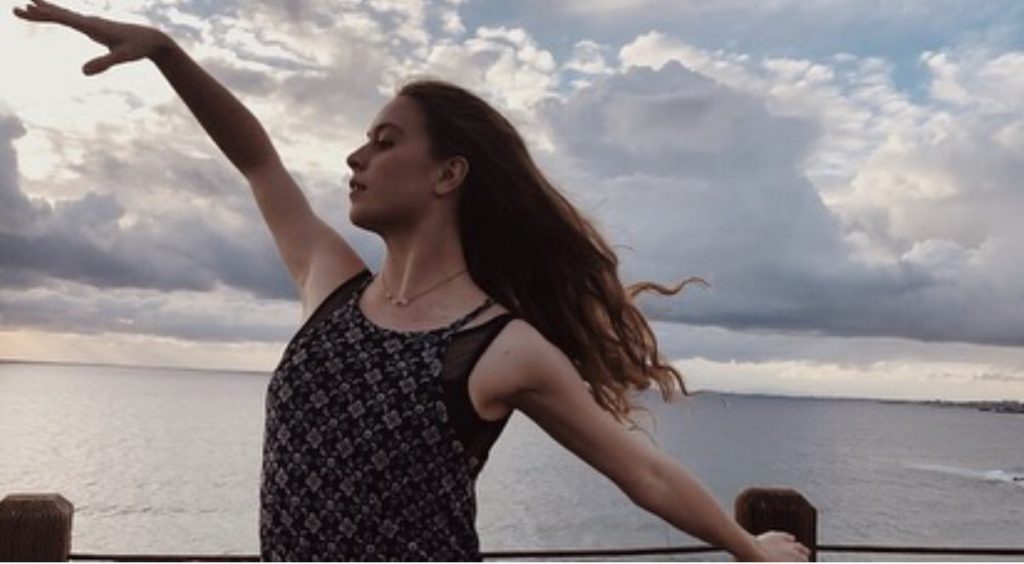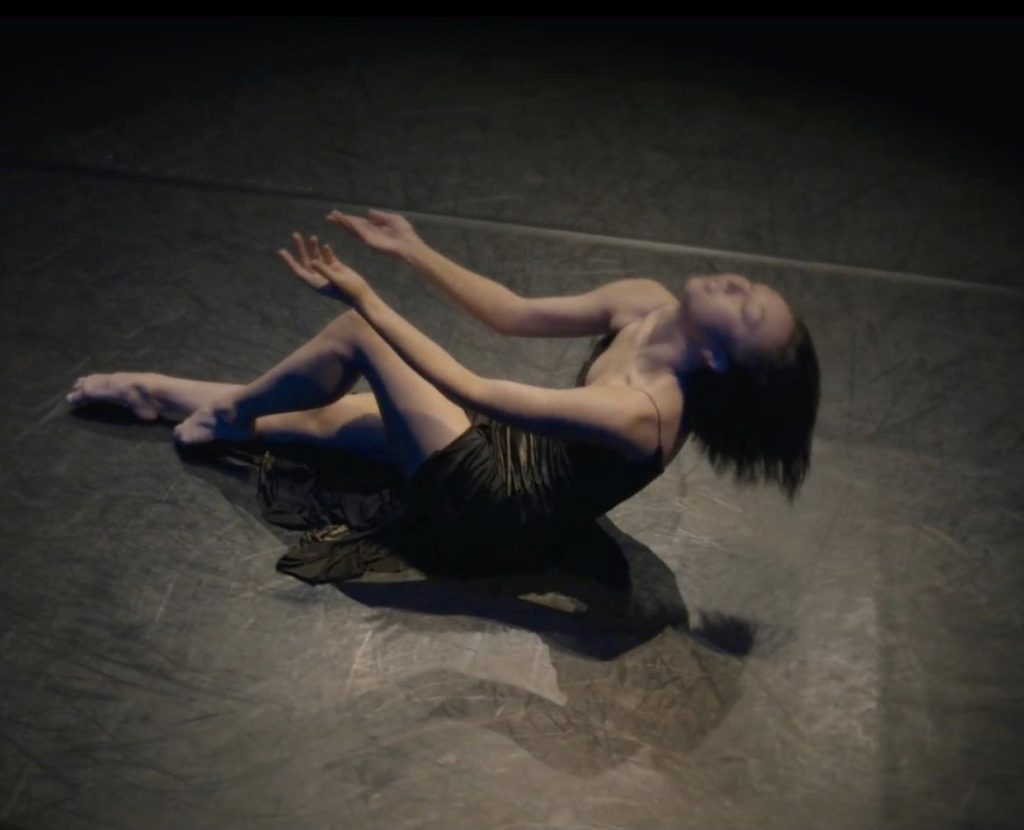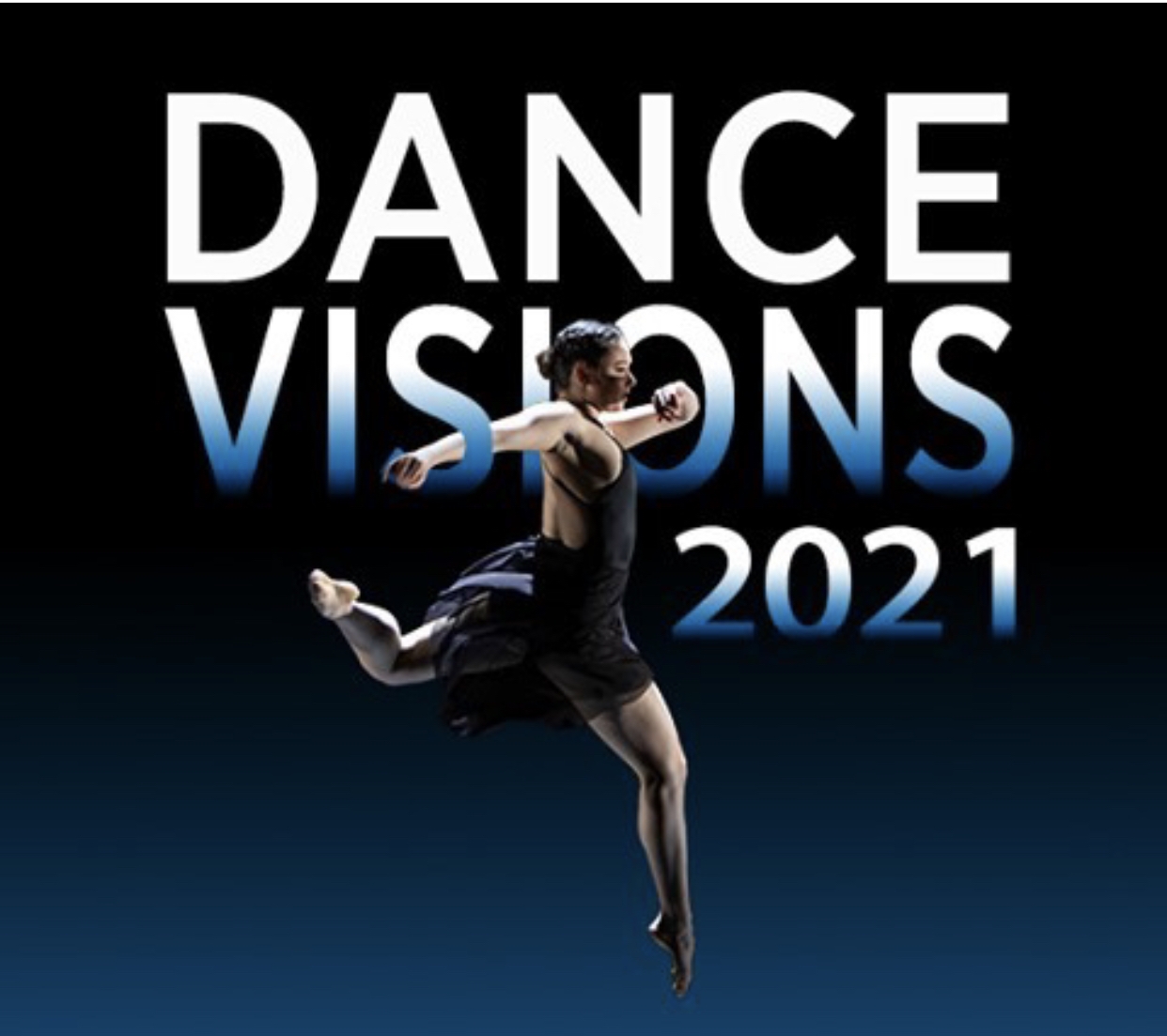“Dance Visions,” the UCI Dance Department’s annual faculty-run show, was held virtually from Feb. 25 to Feb. 27. Audience members were treated with eight undergraduate and graduate dancers’ videos live from the comfort of their homes. Artistic directors Molly Lynch and Tong Wang creatively worked through this virtual format by converting the performance into an online program. Faculty and dancers rose to the challenge of connecting with viewers by using methods they never had before, such as filming in different locations and enhancing the themes of each dance with superb editing techniques.
“Inside/Out” was the first piece of the night to enliven the audience. Choreographed by Lynch in collaboration with the dancers and edited by Katherine Wong, the video comprised of each performer dancing gracefully in their home doing simple tasks, such as eating a bowl of cereal or looking out the window. With their pointe shoes on, the performers were dressed in casual clothes — some with jeans — with their hair down.
The music, provided by Daniel Manoiu, was pensive and elegant at the beginning, steadily growing richer and exciting in tone. Each dancer had to carefully maneuver around coffee tables and chairs, expressing their feelings silently.
Between the music and the dancers acting, universal emotions were relayed in more beautiful a way than words could have ever captured. The piece conveyed the feeling of missing the days when we could leave our homes and see our friends, which was done by stringing together the sequence of one dancer looking out her window to another one as if they could see each other.
Dance professor Lisa Naugle also collaborated with her dancers when choreographing her piece titled “Parallel Worlds,” which contained spoken word poetry written by Naugle. The voices of Mariangela Montenero and James Murray were recorded from an online conversation that took place over a three-month period. With Montenero in Italy, Murray in New York and Naugle in California, they aspired for large themes of duality and reached them through the dancers’ strong movements and dramatic acting. This reflection, amplified by the chilling score provided by Ricardo Santoboni, focused on stories and the people telling them.
Chad Michael Hall was the third choreographer to work with his dancers; he set “Safe Room” to a nerve-wracking track by Ivan Shopov. It opened in a blank white room with different dancers shown inside wearing black face masks. Each dancer was individually moving in distressed-looking choreography, dancing around the small, isolated space while embodying the stress within the safe room. Brilliantly edited by Hall, the sequences were pieced together cohesively, which highlighted the fear of the moments. The camera moved with the dancers, some of whom jerked with anxiety or convincing tension. Eventually, each person progressively dressed in more black clothing, such as gloves and hoods and jackets, until they were all covered head to toe.
Choreographer Lindsay Gilmour takes the audience to the beach in the next piece entitled “weight of the moon on earth.” The opening included an overhead view of seaweed and tide pools, which the video’s filmographer Nathan Whitmont was careful to focus on and intermittently added shots of them in the middle of the main dance. Solo performer Aliya Kerimujiang trailed her fingers through the sand in this bold piece, her movements precise yet freeing, a common paradox in the dance world.
One of the most relevant pieces in the show, “Triggered,” gave a platform for the perils of racism, sexism and other “triggering” concepts. Choreographer Ariyan Johnson managed to acknowledge all this in a tactful and perceptive manner, by drawing from her experiences of encountering upsetting videos online and analyzing her reactions. “Triggered” began with the dancers all dropping their phones, astounded by the disruptive videos they found.
The comforting music, provided by Calvin Gaines and Roland Clark, lifted them up in a most beautiful way as they danced expressively. Each dancer was given a flower representing the hope they each hold for the world in spite of its faults. They danced happily, encouraged by the song and by themselves to focus on the beauty of life; positive videos flooded their background instead of the negative ones.
“I was meditating on how to process something to give yourself encouragement and move forward; not that you forget about the thing that triggered you, but that you gather it within yourself to find the hope you need to move forward,” Johnson said on the creation of “Triggered.”
Continuing with the positive theme was “Harmonically Ü,” choreographed by Vitor Luiz with music from Oliver Davis’ album “Dance Odyssey.” There were great expansive landscape shots, from sunsets on beaches to flowers in forests and the performers dancing joyfully in the midst of it all. The performers reached up with their arms to the open sky in their distinctive dances. Luiz’ choreography and editing skills did not go unnoticed in this exceptionally bright piece.

S. Ama Wray and her dancers collaborated in choreographing “Moving Benedictions,” a religious piece that left every member of the audience enthralled and thoughtful. The performance was split up into several different parts, with title cards saying “Meditation,” “Epiphany,” “Communion,” “Penitence,” “Anticipation,” “Oration” and “Joy.”
The first two title cards were in black and white, the second two in color, “Anticipation” was in a comic book style and the last two were in color. Each had different stylizations for a reason. For instance, “Joy” had to be in color to evoke the colorful feelings a person has in every beautiful and good part of life. Edited by Alan Terricciano, there were some great risks that paid off in the long run, such as a shot of one dancer standing still in front of the camera in a genuine moment of reflection. There were sequences the performers were able to film in a grand, empty cathedral, which was heartfelt and resonated beyond the viewer’s screen.
The show closed with “Scriabin Dances,” which was named after the Russian composer Aleksandre Scriabin. Scriabin had a tonal, romantic style, which distinguished professor Lar Lubovitch captured spectacularly in his choreography of the piece. Katherine Lingle danced three separate pieces that each evoked desperate longing for perfection, which she was able to capture perfectly.

Though the stage is undoubtedly missed, the UCI Dance Department made the most of a socially distanced performance by bringing together eight unique and electrifying pieces. It was a captivating experience that entranced any and all audience members lucky enough to attend.
Lucia Arreola is an Entertainment Staff Writer. She can be reached at arreoll1@uci.edu.


